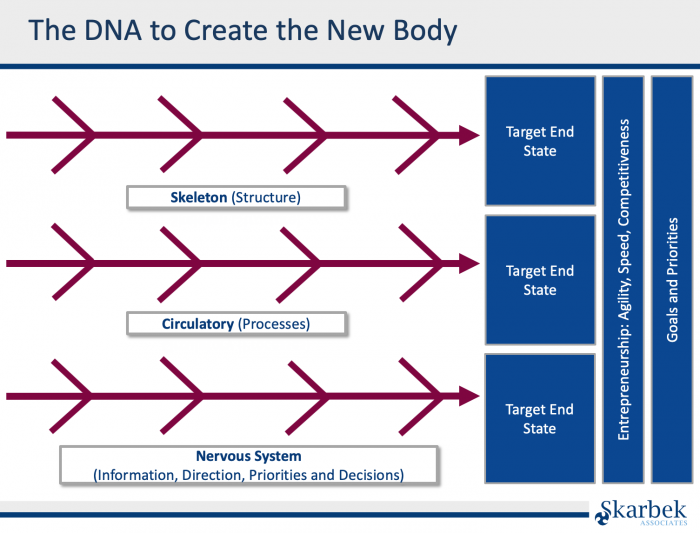The Stubbornly High Rate Of Integration Failures
Can Smart Use Of Metaphors Head Off Post-Integration Chaos?
As we covered in our last article on this topic, the rate of successful M&A integrations, where the original intended benefits are realised, has remained stubbornly low at around 30 – 40%. One way to see change is as a battle for meaning and legitimacy in the minds of the integrating organisations’ people, specifically:
• How do they interpret what is unfolding round them?
• How do they frame the problems they see arising?
• How do you direct them towards useful solutions?
In Skarbek’s experience, communication is the key vehicle to shape this battle, and the choice of metaphors provides the critical guidance. Here we explore a metaphor that has helped many organisations address the challenges.
Metaphors are a key element of communication in organisations and can be most revealing about the culture of an organisation. In Western and especially US-centric cultures, these are often drawn from the domains of sport, or the battlefield. “Closing out”, or “getting across the line” suggests it’s about winning a close fought game on the field of play, and repeated use of these terms reinforces cultural assumptions about how the big issues of the day are to be approached in organisational life.
In integrations, the target future organisation is typically designed to meet a pre-determined budget and described in terms of positions and how they report to each other up through the hierarchy and functions. Usually, this wiring-diagram approach is necessary at the deal stage to proceed, but not sufficient to describe, plan, or implement a fully functioning post-integration organisation capable of delivering major strategic programmes. Frequently insufficient attention is given to process design and the facilitation of information flow.
Skarbek has successfully used an elegant metaphor that crosses cultures to be widely understandable and palatable – that of the human body broken into three elements:
The Skeleton (Structure)
This is often the central focus of the post-integration focus. There are boxes in org charts to be filled, impacted people to be assessed and shuffled, and a huge amount of organisational effort goes into this ‘bums on seats’ activity. But are they ready to work together to deliver key business initiatives?
Circulatory (Processes)
In well-run integrations, the future processes can be described at least partially and with the best of intentions. However, the headwinds are considerable, as much of the deep experience needed to plan and execute the process transitions well is also held by those in the pool of those being impacted, moved, or exited, and the end result is rarely satisfactory. Process re-engineering is challenging enough during more stable times, and often this opportunity is too much for the capacity of an organisation in flux.
Nervous System (Information, Directions, Priorities and Decisions)
This third area, and the most interconnected level, is typically the most neglected, despite being critical for the effective functioning of a post-integration organisation. Those newly placed ‘bums on seats’ are often left to fend for themselves to re-invent something that was running well pre-integration, but that has been torn apart during the transition. And obviously, the patient will not fare well after surgery with a severely damaged nervous system, even if outwardly they look intact!
Poor planning is the most common cause of post-integration pain and the resulting execution capability gap can last months and years. Planning, communication and design workshops underpinned by this simple metaphor can help drive the thinking and action beyond the superficial to the right level to creating a functioning organisation from the beginning, whilst being digestible under the same intuitive communication umbrella.
Clear visual depictions of the journey towards the desired end state reduces organisational uncertainty and individual anxiety. It ensures that day one of an appointee’s new role feels more like the first day in a fully functioning business, rather than a dive into the deep end. Harnessing the energy of those who survive the transition productively early in the life of the new organisation is critical to avoiding the dreaded post-integration chaos that unfortunately is fast becoming the default expectation.

